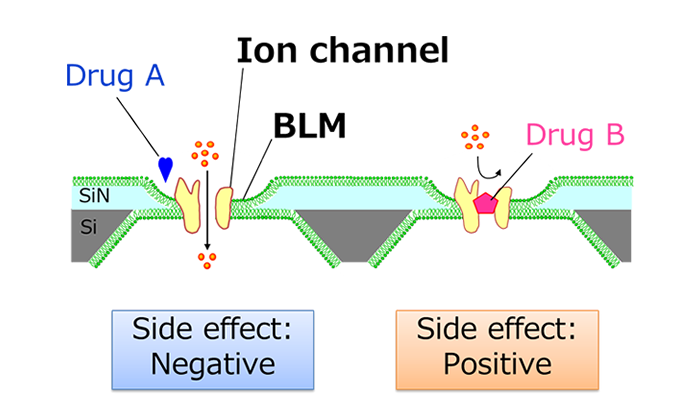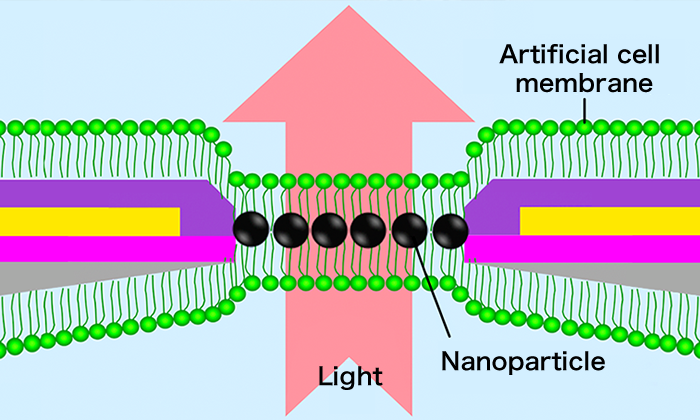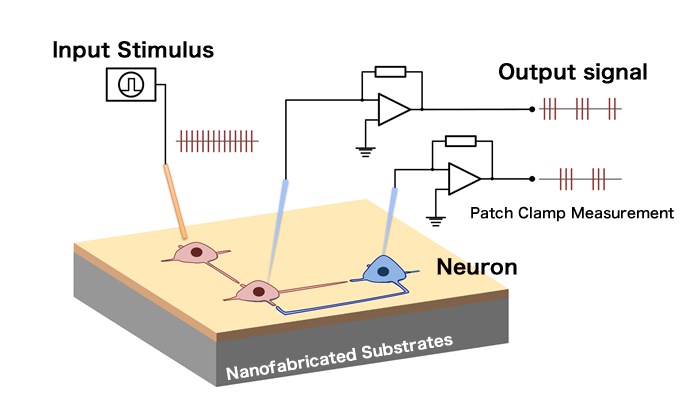Projects
Nano-Bio Integrated Molecular Devices
As a specific research theme, we are fabricating artificial cell membrane devices utilizing nanotechnology and microfabrication. Using this device, we hope to create a sensor that can rapidly detect the side effects of candidate drugs, which will be useful for tailor-made medicine in the future. We are also working on the creation of completely new nano-bio hybrid devices that respond to external light as an applied research using artificial cell membranes. Furthermore, we are also working on the construction of neural circuits by arranging nerve cells on a substrate and investigating their functions to get closer to the mechanism of information processing in the brain.
Detecting Drug Side-Effects on Membrane Proteins
By combining the superior substance recognition/information conversion capabilities of bioelements with nanotechnology, new medical devices can be created. For example, by artificially constructing cell membrane structures and embedding ion channel proteins in them, it is possible to investigate ion channel function under extremely controlled conditions and to develop highly sensitive and rapid detection methods for new drug candidate compounds.

Creation of Photoreactive Nanobiodevices
The cell membrane that surrounds the cell has the interesting property of being both highly insulating and highly fluid. It can be easily reconstituted on a chip by self-assembly of lipid molecules. We are focusing on these characteristics of cell membranes to create ion and electron pathways (nanochannels) in artificial cell membranes. By embedding ion channels, metallic nanoparticles, semiconductor nanoparticles, etc., we form nanochannels in artificial cell membranes that allow ions and electrons to pass through in the vertical and horizontal directions, thereby creating highly sensitive chemical and physical sensors that can operate in aqueous solutions.

Construction of cultured neuronal networks
By applying the technology developed for making microscopic semiconductor devices, it is possible to precisely control the position of neurons, the functional elements of the brain, where they adhere to the glass chip and the direction in which they extend their neuronal projections. Furthermore, when combined with laser processing technology, it is possible to wire between the cells while growing them. We are trying to build a model of the brain using living neurons as the principle elements by combining these substrate fabrication technologies. We also have state-of-the-art experimental equipment to measure the function of the neuronal networks we have created. We are also conducting research to investigate the principles of the operation of neural circuits through theoretical simulations.

